Let us know the different types of sewing machines that are available in the market for home sewing and industrial garment sewing including manual sewing machines, mechanical sewing
machines, electronic sewing machines, computerized sewing machines, and embroidery sewing
machines.
Since the dawn of the sewing machine in the 18th century, it has been able to upgrade itself from manual to mechanical to a computerized machine. Not only that it has since been able to fulfill the needs of commercialised products, domestic products as well as several niche products. This has all been made possible because of the continuous innovations and relentless effort to make them more versatile and efficient. The machine which was once meant to be used for leather and canvas material is now being used in almost all of the apparel, footwear, and home furnishing industry.
The content of the following article will be divided into two sections, Domestic sewing machines, and industrial sewing machines.
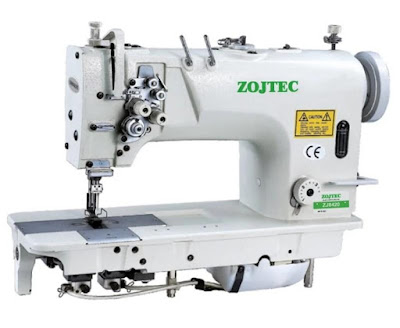
Fig-10: Double-needle Lockstitch machine
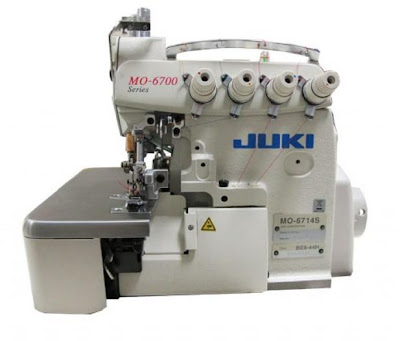
Fig-11: Overlock Machine
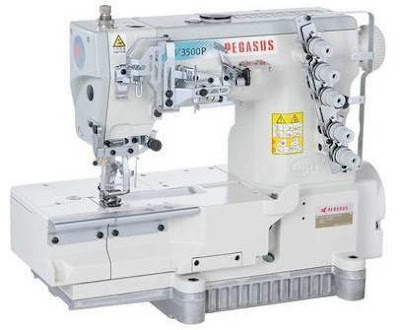
Fig-12: Flatlock Machine
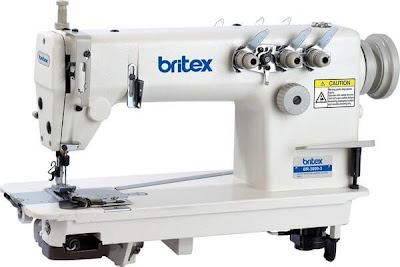
Fig-13: Single needle chain stitch machine

Fig-14: Double needle chain stitch machine

Fig-15: Kansai Special Machine |Multineedle chain stitch machine

Fig-16: FOA
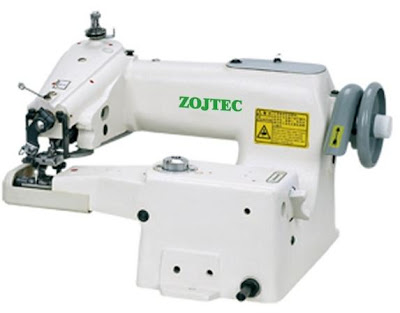
Fig-17: Blind stitch machine

Fig-18: Button attaching machine

Fig-19: Button hole machine
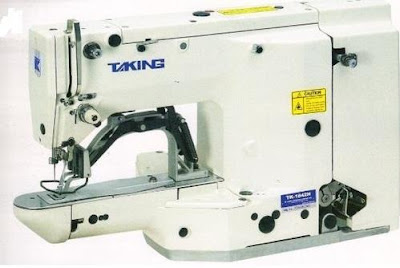
Fig-20: Bar tack machine

Fig-21: Long arm quilting machine

Fig-22: Computer-controlled cycle machine
List of content
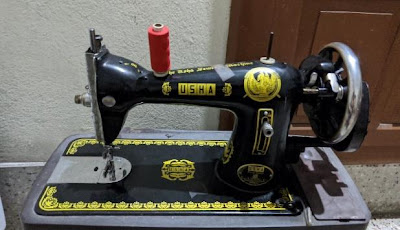
Fig-1: Manual Sewing machine
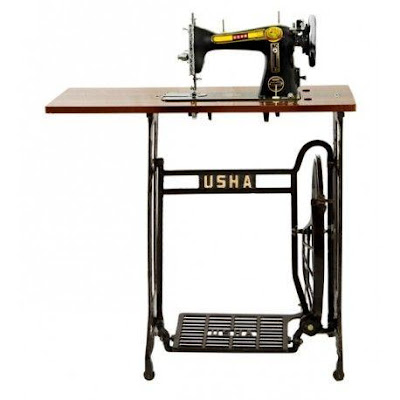
Fig-2: Treadle sewing machine

Fig-3: Mechanical Sewing machine
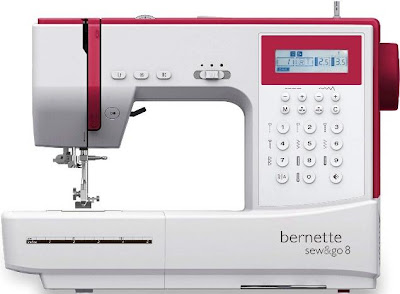
Fig-4: Electronic Sewing Machine
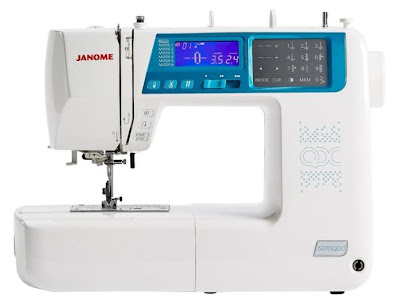
Fig-5: Computerised Sewing Machine
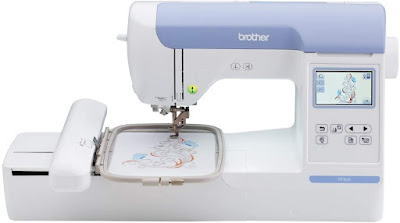
Fig-6: Embroidery Machine
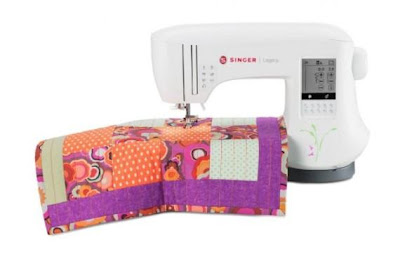
Fig-7: Quilting Machine
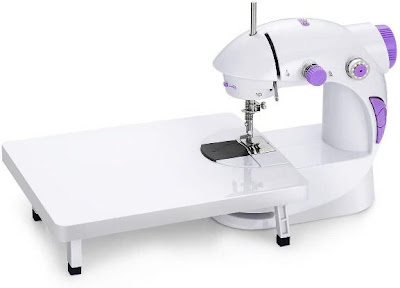
Fig-8: Mini Sewing Machine
1. Domestic sewing machine
1.1 Manual sewing machine
1.2 Treadle Sewing machines
1.3 Mechanical domestic sewing machine
1.4 Electronic domestic sewing machine
2. Computerised domestic sewing machine
2.1 Embroidery machines
2.2 Quilting machines
2.3 Mini/Portable sewing machine
3. Industrial sewing machines:
3.1 Single needle lock stitch machine
3.2 Double needle lock stitch machine
3.3 Overlock/Serger Machine
3.4 Flatlock/Cover stitch Machine
3.5 Single needle chain stitch machine
3.6 Feed of the arm machine
3.7 Blind stitch machine
3.8 Button attaching machine
3.9 Buttonhole Machine
3.10 Bartack sewing machine
3.11 Longarm quilting sewing machine
3.12 Computer-controlled cycle machine
Conclusion
1. Domestic sewing machine
Domestic sewing machines are primarily used for domestic needs and thus named. These machines are built for smaller use cycles and thus mostly made of less sturdy materials such as plastic or lighter metal. These are slower, smaller, less heavy than their industrial counterpart thus adding to easy handling and making it ideal for domestic use. But modern domestic machines also excel in working with different types of domestic material and are much diverse in functionality.1.1 Manual sewing machine
These are considered the godfather of sewing machines as all the sewing machines now are derived from this machine. These can still be found in local tailor shops, homes, and several other places all indicating its durability. These are made of metal and controlled with the handwheel as there is no motor to drive the machine. For the machine to work the handwheel has to be rotated all the time which helps control the machine, thus can be very helpful for beginners. But this lacks the speed for commercialised products since the machine is powered by human and one of the operator’s hand is also involved resulting to decreases productivity. This machine can mostly be used for small mending or DIYs for personal use.Fig-1: Manual Sewing machine
1.2 Treadle Sewing machines
Unlike the above, the main control over the machine has been shifted towards the leg with the help of a treadle where the operator has to power the machine by continuously paddling the treadle. Apart from that everything is similar, this is much faster and efficient as the now unoccupied hand can be used for material handling. Also, the machine speed can be controlled by the paddling movement. These are mostly found in local tailor shops.Fig-2: Treadle sewing machine
1.3 Mechanical domestic sewing machine
These are the upgraded version of such machines. These are inspired by the industrial machines and thus became mechanised. Powered by electrical motor these are much faster than the previous machines. But the use of less durable parts to favour portability limited its durability and can be used for only a few hours at a stretch. But these are loaded with functionality compared with traditional industrial machines which include different settings for different types of stitches, needle positioning etc. This served the need for a wide variety of Hobbies and DIYs for domestic use. To access those setting the user only has to move knobs, twist them, move lever manually and such mechanical work, thus the name. Unlike the above, it is controlled by a pedal and pressing with different pressure to adjust the machine speed.Fig-3: Mechanical Sewing machine
1.4 Electronic domestic sewing machine
These are the even more advanced version of the above mechanical machines as the mechanical knobs and lever has now been replaced with the LCD screens and buttons. From the screen, all the machine features can be adjusted electronically by moving through the settings menu and pressing buttons. The functions included are selecting between stitch types, adjusting stitch length, altering the width of the zig-zag stitch, decorative stitch, etc. But these came with its problem at the beginning as the machines were not reliable and durable, with the use of electronic components. This has since been diverted at the cost of getting more expensive.Fig-4: Electronic Sewing Machine
2. Computerised domestic sewing machine
It is the same as that of the electrical sewing machine but unlike the above, all the controls have been shifted from dials and buttons to LCD touchscreens on the machines. All it is needed is to maneuver through the options on the screen to get the desired sewing feature. These machines also come with USB port, WiFi, Bluetooth, NFC for connectivity with mobile devices so that settings can be applied directly through the mobile system, transferred from one machine to another or downloaded from online databases. These machines also come with several automated features best of which being automatic needle threader with others like tension adjuster, thread cutter, bobbin winder, locking straight stitch functions for reinforced seams, auto tying of loose ends, and much more. Computerised machines are known for their versatility as these machines can work with quilting, embroidery, heavy-duty sewing and even certain specialized sewing. The machines are also precise in sewing and can adjust to the different types of fabric. For assistance, these machines sometimes also provide on-screen tutorials of sewing different stitches for an effortless experience. All the above features add to endless possibilities for domestic sewing with the downside being durability of such machines is comparable to the above electronic machines and are also priced higher than the above machines.Fig-5: Computerised Sewing Machine
2.1 Embroidery machines
As the name, these are used for designing different embroidery patterns for domestic projects and DIYs. These machines have a substantial amount of in-build embroidery designs and functionality to add more designs with the in-built memory facility and USB stick. Upon requirement, these machines can also be used for basic sewing with numerous options as well as allows for decorative stitches. To switch between these modes only an embroidery hoop has to attach or removed making the process very easy. With all the functionality these machines are expensive compared to any mechanical or electrical sewing machines but are very versatile in functioning.Fig-6: Embroidery Machine
2.2 Quilting machines
These machines are used for quilting operations. Its longer arm allows for larger fabrics to be operated through the machine. Most of the machine has programmable needle up/down feature which comes handy for patchworks. These also include few basic and decorative stitches for versatility.Fig-7: Quilting Machine
2.3 Mini/Portable sewing machine
These machines are fairly available in the market and are cheap compared to all the other machines. This is because these are destined to be used for minimal applications such as basic mending, sewing, alters and other similar projects. These are small, lightweight and thus are easily portable. These portable machines can perform straight sewing by lock stitch with the occasional function of zig-zag stitching also. Considering the price these are not that much durable and can work at a stretch for a small amount of time.Fig-8: Mini Sewing Machine
3. Industrial sewing machines:
Industrial sewing machines are made for making mass consumer products and are thus used in the industries. This includes apparel, footwear, home furnishing and similar industries which depend on sewing their products for its manufacturing. These machines are aimed to stitch a wide variety of fabrics ranging from muslin to canvas to that of leather, plastics and thus are very versatile. Unlike domestic machines these are made from durable materials, construction of metals and thus can work for hours at a stretch without the motor heating up or any need for maintenance.Being mechanical with few or no computerised parts, these are much faster, accurate and efficient than their domestic counterpart. Industrial machines are of different types most of which are designed to be used for primary functions only which add to its durability. The machines are costly but only because of their build material, durability, easy maintenance which can last for years. This allows for good resale value and most often these second-hand machines boost various small-scale industries.

Fig-9: Lock stitch machine
3.1 Single needle lock stitch machine
These are the most common sewing machines that are available and can be seen in all the industries related to sewing and also tailor shops all around. It stitches mostly in a straight line with 301 stitch type and often the addition of zig-zag stitch (304 stitch type). This can work with all the types of fabric available including heavy fabrics such as canvas or denim. Attachments available are in the types of pressure foot, needle types, feed dogs, UBT etc. It requires two threads, one for the needle and other for the bobbin. Operations like seaming, hemming, attachments are perfect for SNLS machines These machines are now being upgraded with electronics to make it sync with the upcoming IoT solutions.Fig-9: Lock stitch machine
3.2 Double needle lock stitch machine
The functioning is the same as above but instead of one needle, it has two needles thus two-needle thread, bobbin thread, tensioner, take up, thread guide, spool pin and needle holder. The stitch runs parallel to each other and is used in different seaming operations in shirts, jeans, overcoat or similar clothing.Fig-10: Double-needle Lockstitch machine
3.3 Overlock/Serger Machine
The overlock machines are used to sew sturdy seams, well-finished hems and fabric edges or two pieces of fabric. These machines are of two types, one for basic overlock and the other with a safety stitch of chain stitch running along with the overlock stitch. These are also equipped with a cutter that trims the fabric edge on feeding to provide a neat finishing edge. Unlike lockstitch machines, overlock machine uses loopers fed by multiple thread cones instead of the bobbin. It runs at a much higher speed than any other sewing machine with speed reaching up to 9000rpm but domestic overlock machines are much slower to make them user friendly and versatile. These machines come with the option for two to five thread and are used for finishing edges, hemming and seaming for knits in sportswear, intimates, fleece fabrics etc.Fig-11: Overlock Machine
3.4 Flatlock/Cover stitch Machine
These machines are specialised for sewing cover stitches. This functions by interloping of the looper threads with that of needle threads at the underside of the seam. For the top spreader, another thread is interlaced on the top side of the seam between the two needle threads. By changing the number of threads different types of stitch formation can be achieved like 2 needle bottom cover stitch, 2 needle cover stitch with cover thread, 2 needle 4 thread cover stitch etc. Stitch class of 400 and 600 are possible with this machine. With such a wide variety of stitching these machines can be sued for binding, flat seaming, hemming in knit garments, attaching elastic, attaching pocket facing in jeans etc.Fig-12: Flatlock Machine
3.5 Single needle chain stitch machine
This machine is used to create chain stitch which unlike lockstitch used one thread and interloping it to stitch into the fabric. Due to this, the stitch is much more stretchable and is used for stretch fabrics. The machine can stitch both straight stitched seam as well as a zig-zag stitch. Apart from sewing seams, this can also be used for decorative sewing or bindings. There are different variants of this machine with double-needle and multiple needle configuration. Multiple needle chain stitch machine is known as Kansai Machine and is used for smocking and pin-tuck operations.Fig-13: Single needle chain stitch machine
Fig-14: Double needle chain stitch machine
Fig-15: Kansai Special Machine |Multineedle chain stitch machine
3.6 Feed of the arm machine
This machine is designed to be used for lapped seams. It is most commonly used in jeans for sewing the inseam, attaching the yoke to the back and the front and back raise. It can also be used for shirts and other light to medium weight fabric.Fig-16: FOA
3.7 Blind stitch machine
This machine specialized in creating an invisible stitch which is used for hemming in trousers, skirts, shorts. It replaced the age-old blind stitching by hand for commercial production.Fig-17: Blind stitch machine
3.8 Button attaching machine
This machine is used to attach buttons by sewing it using lock stitch. The machine is programmable to change its setting according to two holes, four holes or shank buttons by simply adjusting the button clamp and spacing mechanism. Some machines also come with an automatic button feeding mechanism eliminating the operator’s work of button placement.Fig-18: Button attaching machine
3.9 Buttonhole Machine
This machine is used to create neat buttonholes using a lock stitch or chain stitch. Out of both the lockstitch are most common because of its strength and security but chain stitch gives much neat finish with lacks in strength. The machine is programmable to make several types of buttonholes and with a knife attached to cut through the buttonhole.Fig-19: Button hole machine
3.10 Bartack sewing machine
This is a specialized machine only to be used for bar tacks. Bar tack is used to reinforce specific areas of the garments and accessories like that on the back pocket on jeans, securing the bottom of flies, attaching the belt loops, etc.Fig-20: Bar tack machine
3.11 Longarm quilting sewing machine
This machine is specially used for quilting and is equipped with long arms to allow room for material handling. These machines are available both in mechanical as well as computerised for easy quilting.Fig-21: Long arm quilting machine
3.12 Computer-controlled cycle machine
These machines are pre-programmed to move on a certain pattern automatically and are used for stitching labels, emblems, decorative stitches on pockets etc. The fabric is laid on a template and from there the machine recognises the placement and start with the sewing. These are most useful for small complicated operations to nullify the human factor and provide accurate stitch every time.Fig-22: Computer-controlled cycle machine
Conclusion:
With the above types, it can be seen that the difference in domestic and industrial machines is mostly with functioning.
While domestic machines are expected to work for a small duration of time, the industrial machines have to be a workhorse to run smoothly throughout the day. This becomes the driving reason to make the industrial machines less complicated in working and thus have limited functions. Due to this, the number of industrial machines is huge compared to domestic machines as each machine has to perform different operations unique to that machine.
With such, it can be concluded with the fact that industrial machines can be used for domestic use provided the need but domestic machines will be a nightmare to be used in industries.
